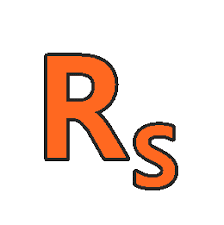About Course
Mapping Signal Processing Algorithms to Architecture
Digital signal processing usually entails performing repetitive computations on streams of incoming data while keeping in mind restrictions such as sampling rate and desired throughput. Such systems are frequently required to be constructed under strict time, resource, power, or cost limitations. When utilized in embedded systems, custom designs with considerably superior cost-to-benefit ratios than general-purpose computing architectures are typically worth the effort.
This course examines such algorithms and maps them to architectures that are either custom-designed or have unique adaptations that make them more suited to specific operations. Fundamental performance bounds, mapping to a dedicated and bespoke resource shared architectures, and approaches for automating the scheduling process are all covered. Memory access shared buses, and memory-mapped accelerators will all be investigated as part of the design. The assignments will cover a wide range of topics, from implementing and testing specifications through synthesis and scheduling utilizing high-level synthesis tools, as well as analyzing and improving the generated architectures.
Mapping Signal Processing Algorithms to Architecture Course Plan
Week 1: Review: Digital systems, digital signal processing, and computer architecture
week 2,3: DSP system models; quality metrics and bounds; number representations
Weeks 4,5,6: Implementation Time and resource constraints; allocation, binding, and scheduling strategies, Dedicated hardware; transformations; resource sharing;
Weeks 7, 8, and 9: Architectures: Programmable Systems, FSMs, and Microprograms; Instructions.
Join now to Mapping Signal Processing Algorithms to Architecture course.
Course Content
Mapping Signal Processing Algorithms to Architecture
-
Implementation Costs and Metrics
12:00 -
Architecture cost components
05:25 -
Number representation
07:01 -
Scientific notation and Floating point
12:23 -
Retiming basic concept
05:16 -
Pipelining
13:52 -
Valid pipelining examples
09:03 -
Constraint analysis for IPB computation
18:25 -
Power consumption
04:48 -
General IPB computation
11:29 -
DEMO: FFT synthesis
11:44 -
Examples with formulation
08:09 -
DEMO: FFT in Vivado HLS
13:46 -
Mathematical formulation
11:59 -
Hardware assumptions and constraint analysis
13:47 -
Changing iteration period
05:00 -
Resource sharing: adder example
17:53 -
DEMO: Analyze FFT implementation
11:04 -
Iteration period bound and schedulingsson
12:49 -
ALAP schedule
08:03 -
Allocation, Binding and Scheduling
15:43 -
Retiming for scheduling
09:02 -
Improved blocked schedule
07:11 -
Obtaining a folding schedulen
13:50 -
Scheduling: problem formulation
15:31 -
Force Directed Scheduling
31:07 -
DEMO: FFT Simulation and Optimizationson
21:41 -
ILP formulation
11:41 -
Heuristic approaches to scheduling
16:29 -
Mathematical formulation
15:08 -
DEMO: HLS on FFTon
15:45 -
Example: differential equation solver
08:44 -
Software Compilation
16:43 -
Optimization Examples
22:03 -
Loop optimizations 1
18:27 -
Loop optimizations 2
20:10 -
Background: CPUs and FPGAs
24:57 -
Demo: FFT on FPGA board
28:18 -
Demo: Vivado setupn
14:57 -
Demo: Vivado ILA and VIO on hardware
19:18 -
AXI bus handshaking
21:12 -
AXI bus (contd)
18:07 -
Demo: HW accelerator for FPGA
21:50 -
DMA and arbitration
23:38 -
NoC – topologies and metrics
21:37 -
NoC – routing
16:12
